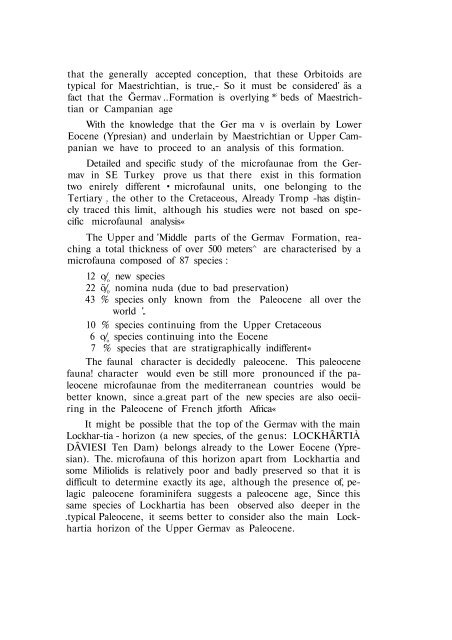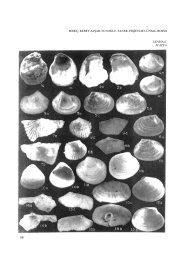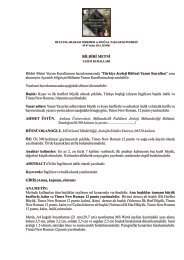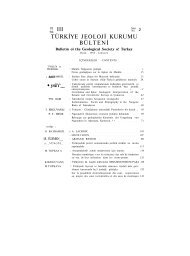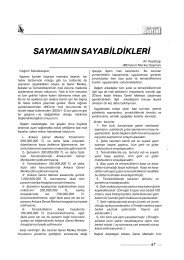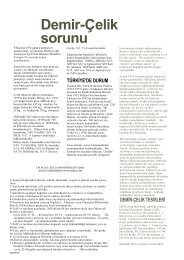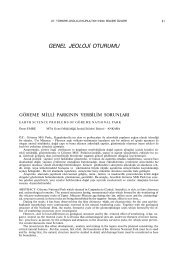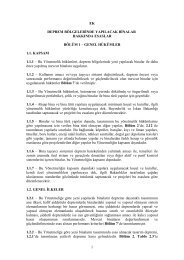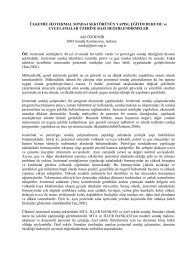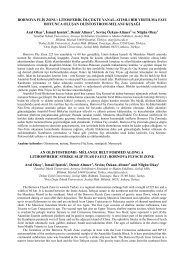Cenub DoÄu Türkiye'de Tersiyer-Kretase'Hududu
Cenub DoÄu Türkiye'de Tersiyer-Kretase'Hududu
Cenub DoÄu Türkiye'de Tersiyer-Kretase'Hududu
You also want an ePaper? Increase the reach of your titles
YUMPU automatically turns print PDFs into web optimized ePapers that Google loves.
that the generally accepted conception, that these Orbitoids are<br />
typical for Maestrichtian, is true,- So it must be considered' äs a<br />
fact that the Ğermav ..Formation is overlying * ; beds of Maestrichtian<br />
or Campanian age<br />
With the knowledge that the Ger ma v is overlain by Lower<br />
Eocene (Ypresian) and underlain by Maestrichtian or Upper Campanian<br />
we have to proceed to an analysis of this formation.<br />
Detailed and specific study of the microfaunae from the Germav<br />
in SE Turkey prove us that there exist in this formation<br />
two enirely different • microfaunal units, one belonging to the<br />
Tertiary<br />
?<br />
the other to the Cretaceous, Already Tromp -has diştincly<br />
traced this limit, although his studies were not based on specific<br />
microfaunal analysis«<br />
The Upper and 'Middle parts of the Germav Formation, reaching<br />
a total thickness of over 500 meters^ are characterised by a<br />
microfauna composed of 87 species :<br />
12 o/ o<br />
new species<br />
22 ö/ 0<br />
nomina nuda (due to bad preservation)<br />
43 % species only known from the Paleocene all over the<br />
world '..<br />
10 % species continuing from the Upper Cretaceous<br />
6 o/ o<br />
species continuing into the Eocene<br />
7 % species that are stratigraphically indifferent«<br />
The faunal character is decidedly paleocene. This paleocene<br />
fauna! character would even be still more pronounced if the paleocene<br />
microfaunae from the mediterranean countries would be<br />
better known, since a.great part of the new species are also oeciiring<br />
in the Paleocene of French jtforth Africa«<br />
It might be possible that the top of the Germav with the main<br />
Lockhar-tia - horizon (a new species, of the genus: LOCKHÂRTIÀ<br />
DÂVIESI Ten Dam) belongs already to the Lower Eocene (Ypresian).<br />
The. microfauna of this horizon apart from Lockhartia and<br />
some Miliolids is relatively poor and badly preserved so that it is<br />
difficult to determine exactly its age, although the presence of, pelagic<br />
paleocene foraminifera suggests a paleocene age, Since this<br />
same species of Lockhartia has been observed also deeper in the<br />
.typical Paleocene, it seems better to consider also the main Lockhartia<br />
horizon of the Upper Germav as Paleocene.


